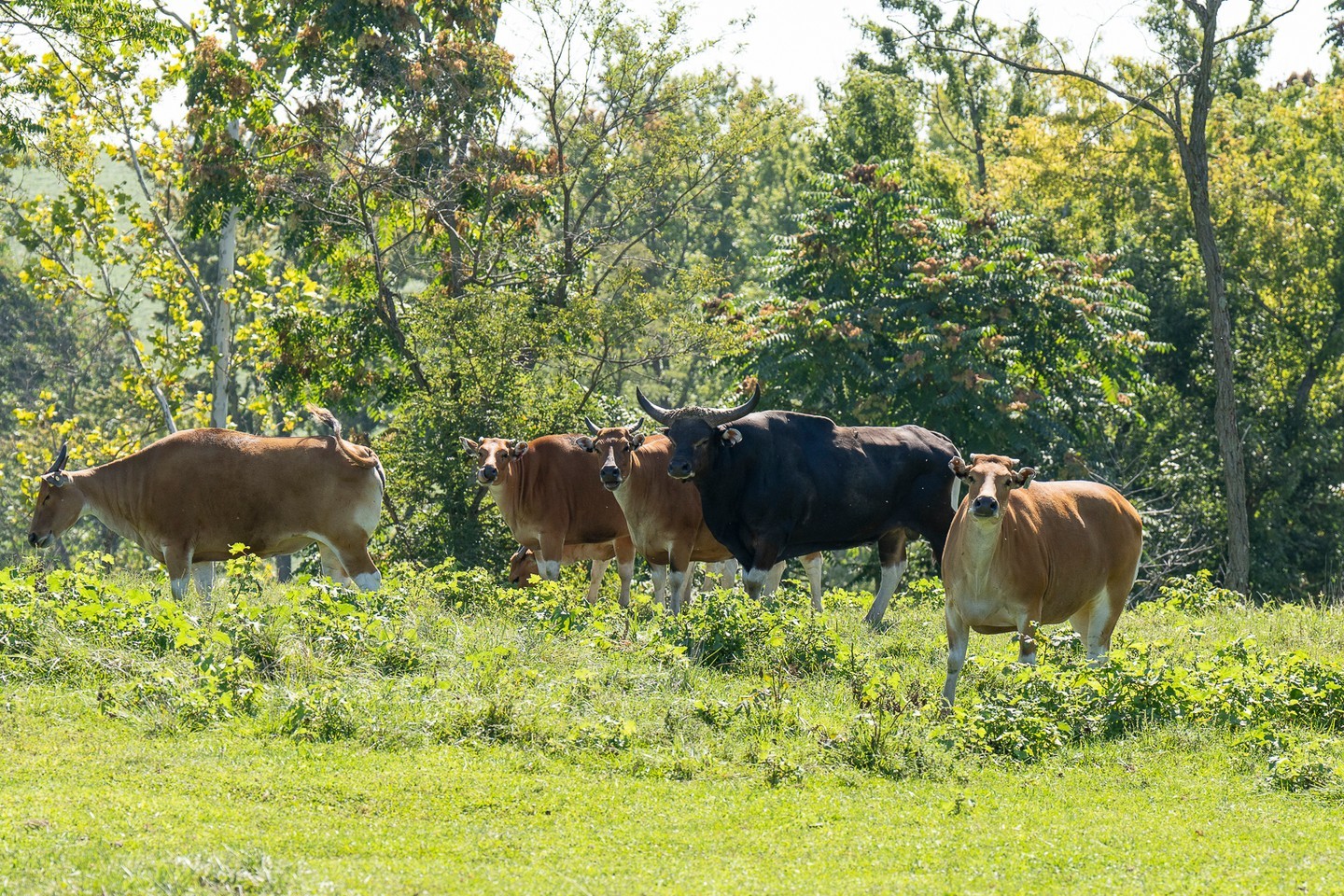- Intriguing behavior and characteristics of banteng
- The conservation significance of banteng in modern ecosystems
- The role of art in wildlife conservation and public awareness
- The educational and communal value of painting events like Brushes and Banteng
- The integration of zoo management practices to enhance visitor experiences and animal welfare
The banteng is a captivating species of wild cattle found predominantly in Southeast Asia. Known for their robust bodies and striking white stockings on their legs, banteng are classified scientifically as Bos javanicus. As a subject of continuous research and conservation efforts, banteng is fascinating for its social structures, mating behaviors, and adaptability to both wild and managed environments. This article delves into several key areas concerning banteng, ranging from their natural behaviors to their conservation, and the interplay between art, education, and environmental stewardship.
The behavior and characteristics of banteng are a cornerstone of their intrigue. These animals display a variety of social structures, typically forming groups consisting of a dominant male, several females, and their offspring. In the wild, these groups navigate dense forests and open grasslands, showcasing their herbivorous dietary preferences, including grasses, bamboo, fruits, and leaves. Physically, banteng exhibit sexual dimorphism, where males are larger and darker in color compared to females. This differentiation helps in social organization and mating rituals, which are crucial for the propagation of the species. Understanding these behaviors aids in developing effective conservation strategies and ensuring captive populations’ well-being.
Conservationists emphasize the vital role banteng plays in their ecosystems. As grazers, they help maintain plant diversity and soil health, which supports a myriad of other species. However, banteng faces several threats, including habitat loss, hunting, and disease. Conservation strategies involve habitat protection, anti-poaching efforts, and breeding programs. Zoos and conservation parks globally participate in these efforts by housing genetically diverse populations and facilitating research that informs conservation practices in the wild. By maintaining and studying these populations, scientists and conservationists aim to bolster wild populations, ensuring the sustainability of banteng ecosystems.
Art has long been a medium for environmental awareness, and events like the Brushes and Banteng Painting Party serve as powerful platforms for conservation education. Such events draw public attention, fostering a connection between people and wildlife through creative expression. Attendees of the Brushes and Banteng painting party will not only paint these majestic creatures while overlooking serene pastures but will also engage with vital conservation messages. This creates a multi-layered educational experience, allowing participants to learn about banteng conservation directly from experts while expressing themselves artistically. Incorporating art in conservation activities helps humanize wildlife issues, making them more relatable and urgent to a broader audience.
Furthermore, organized events like Brushes and Banteng offer numerous educational and communal benefits. They bring together wildlife enthusiasts, artists, conservationists, and the general public, creating a melting pot of ideas and shared values. Participants gain first-hand experiences through zoo tours, interactive talks, and guided painting sessions, which can foster a lifelong appreciation for wildlife and a commitment to environmental stewardship. Such gatherings often inspire participants to contribute to conservation efforts through donations, volunteer work, or advocacy, thereby amplifying the event’s impact beyond its immediate scope.
Effective zoo management is crucial in enhancing both visitor experiences and animal welfare. Modern zoos are designed to mimic natural habitats, providing environments that cater to the physical and psychological needs of the animals. The welfare of banteng in captivity involves dedicated teams of zookeepers, veterinarians, and nutritionists who work together to create enrichment programs that stimulate natural behaviors. Additionally, zoos implement rigorous breeding programs to maintain genetic diversity, collaborate in international studbooks, and partake in research that can benefit wild populations. Visitor education is also a priority, with informative displays, interactive exhibits, and guided tours that enhance understanding and appreciation of wildlife.
In detail, zoo management practices include habitat enrichment activities such as introducing new and varied foliage, providing puzzle feeders, and designing spaces that encourage natural behaviors like foraging and exploration. These actions ensure banteng’s mental and physical health, which is vital for a thriving captive population. Furthermore, by participating in global breeding programs, zoos contribute to the genetic health of banteng, making it possible to reintroduce individuals into the wild with a higher chance of survival.
Visitor engagement is another key aspect of zoo management. By offering educational programs and interactive exhibits, zoos can convey the importance of biodiversity and the actions needed to protect it. These experiences can transform visitors into informed advocates for conservation, multiplying the reach and impact of zoo-based initiatives. The Brushes and Banteng event is a quintessential example of how zoos can creatively engage the public, combining art and education to promote wildlife conservation.
The intersection of art, education, and conservation epitomized by events like Brushes and Banteng demonstrates an innovative approach to wildlife advocacy. These initiatives not only spotlight the plight of species like the banteng but also mobilize community support, funding, and awareness. As participants paint, learn, and explore, they become part of a broader conservation narrative—one that underscores the interconnectedness of all life and the shared responsibility to safeguard it.
In closing, the multifaceted facets of banteng conservation, the significance of community engagement through art, and the critical role of modern zoo management all converge to form a comprehensive strategy for wildlife preservation. Through informed, collaborative efforts, we can pave the way for a future where remarkable species like the banteng continue to thrive both in the wild and in managed care. Join an initiative like the Brushes and Banteng painting party to experience this endeavor first-hand while contributing to a global mission.
*****
Source Description
Painting banteng while admiring endless views of serene pastures and diverse wildlife. Sound like something you’d enjoy? Us too.
Only one week remains until our Brushes and Banteng painting party in honor of Action Indonesia Day. Join us on August 10 and take a tour while you’re here, too!
Reserve your ticket today on our website.


